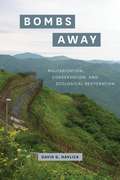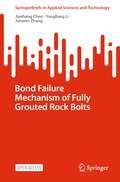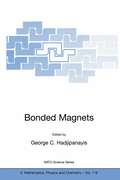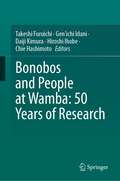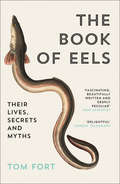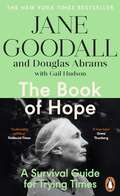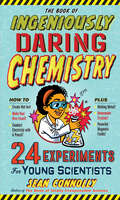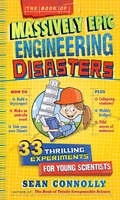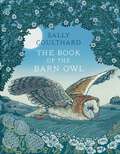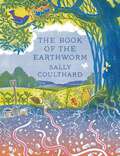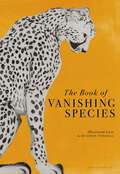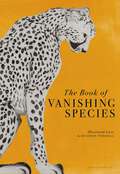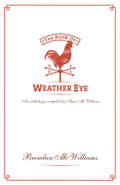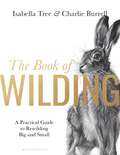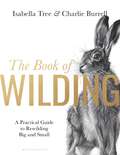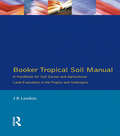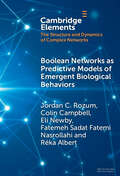- Table View
- List View
Bombs Away: Militarization, Conservation, and Ecological Restoration
by David G. HavlickWhen viewed from space, the Korean Peninsula is crossed by a thin green ribbon. On the ground, its mix of dense vegetation and cleared borderlands serves as home to dozens of species that are extinct or endangered elsewhere on the peninsula. This is Korea’s demilitarized zone—one of the most dangerous places on earth for humans, and paradoxically one of the safest for wildlife. Although this zone was not intentionally created for conservation, across the globe hundreds of millions of acres of former military zones and bases are being converted to restoration areas, refuges, and conservation lands. David G. Havlick has traveled the world visiting these spaces of military-to-wildlife transition, and in Bombs Away he explores both the challenges—physical, historical, and cultural—and fascinating ecological possibilities of military site conversions. Looking at particular international sites of transition—from Indiana’s Big Oaks National Wildlife Refuge to Cold War remnants along the former Iron Curtain—Havlick argues that these new frontiers of conservation must accomplish seemingly antithetical aims: rebuilding and protecting ecosystems, or restoring life, while also commemorating the historical and cultural legacies of warfare and militarization. Developing these ideas further, he shows that despite the ecological devastation often wrought by military testing and training, these activities need not be inconsistent with environmental goals, and in some cases can even complement them—a concept he calls ecological militarization. A profound, clear explication of landscapes both fraught and fecund, marked by death but also reservoirs of life, Bombs Away shows us how “military activities, conservation goals, and ecological restoration efforts are made to work together to create new kinds of places and new conceptions of place.”
Bombs Away: Militarization, Conservation, and Ecological Restoration
by David G. HavlickWhen viewed from space, the Korean Peninsula is crossed by a thin green ribbon. On the ground, its mix of dense vegetation and cleared borderlands serves as home to dozens of species that are extinct or endangered elsewhere on the peninsula. This is Korea’s demilitarized zone—one of the most dangerous places on earth for humans, and paradoxically one of the safest for wildlife. Although this zone was not intentionally created for conservation, across the globe hundreds of millions of acres of former military zones and bases are being converted to restoration areas, refuges, and conservation lands. David G. Havlick has traveled the world visiting these spaces of military-to-wildlife transition, and in Bombs Away he explores both the challenges—physical, historical, and cultural—and fascinating ecological possibilities of military site conversions. Looking at particular international sites of transition—from Indiana’s Big Oaks National Wildlife Refuge to Cold War remnants along the former Iron Curtain—Havlick argues that these new frontiers of conservation must accomplish seemingly antithetical aims: rebuilding and protecting ecosystems, or restoring life, while also commemorating the historical and cultural legacies of warfare and militarization. Developing these ideas further, he shows that despite the ecological devastation often wrought by military testing and training, these activities need not be inconsistent with environmental goals, and in some cases can even complement them—a concept he calls ecological militarization. A profound, clear explication of landscapes both fraught and fecund, marked by death but also reservoirs of life, Bombs Away shows us how “military activities, conservation goals, and ecological restoration efforts are made to work together to create new kinds of places and new conceptions of place.”
Bombs Away: Militarization, Conservation, and Ecological Restoration
by David G. HavlickWhen viewed from space, the Korean Peninsula is crossed by a thin green ribbon. On the ground, its mix of dense vegetation and cleared borderlands serves as home to dozens of species that are extinct or endangered elsewhere on the peninsula. This is Korea’s demilitarized zone—one of the most dangerous places on earth for humans, and paradoxically one of the safest for wildlife. Although this zone was not intentionally created for conservation, across the globe hundreds of millions of acres of former military zones and bases are being converted to restoration areas, refuges, and conservation lands. David G. Havlick has traveled the world visiting these spaces of military-to-wildlife transition, and in Bombs Away he explores both the challenges—physical, historical, and cultural—and fascinating ecological possibilities of military site conversions. Looking at particular international sites of transition—from Indiana’s Big Oaks National Wildlife Refuge to Cold War remnants along the former Iron Curtain—Havlick argues that these new frontiers of conservation must accomplish seemingly antithetical aims: rebuilding and protecting ecosystems, or restoring life, while also commemorating the historical and cultural legacies of warfare and militarization. Developing these ideas further, he shows that despite the ecological devastation often wrought by military testing and training, these activities need not be inconsistent with environmental goals, and in some cases can even complement them—a concept he calls ecological militarization. A profound, clear explication of landscapes both fraught and fecund, marked by death but also reservoirs of life, Bombs Away shows us how “military activities, conservation goals, and ecological restoration efforts are made to work together to create new kinds of places and new conceptions of place.”
Bond Failure Mechanism of Fully Grouted Rock Bolts (SpringerBriefs in Applied Sciences and Technology)
by Jianhang Chen Yongliang Li Junwen ZhangThe purpose of writing this book is to provide the latest research findings in ground control techniques in mining engineering, especially the rock bolting techniques. Since rock bolts are widely used in mining engineering and civil engineering, they are significant in guaranteeing the safety of underground openings. However, instability issues still occur with the rock bolting technique. Therefore, it is valuable to understand the exact load transfer mechanism of rock bolts. This book summarised the recent research work regarding rock bolting conducted by the authors. It is valuable for the readers to fully understand the reinforcing mechanism of fully grouted rock bolts. This book focuses on the bond failure mode of fully grouted rock bolts, which is the most widely encountered failure mode in rock bolting. Different investigation approaches are used in this book, including numerical simulation, analytical modelling and experimental tests. Therefore, this book conducts a comprehensive study to reveal the bond failure process of fully grouted rock bolts. Moreover, it reveals the corresponding bond failure mechanism. Therefore, it helps the reads to fully understand the bond failure mechanism of rock bolting. Moreover, it helps the readers to develop new approaches and methods to prevent failure of the rock bolting system.This is an open access book.
Bonded Magnets: Proceedings of the NATO Advanced Research Workshop on Science and Technology of Bonded Magnets Newark, U.S.A. 22–25 August 2002 (NATO Science Series II: Mathematics, Physics and Chemistry #118)
by G. C. HadjipanayisBonded magnets are the fastest growing sector in the entire market for magnetic materials. Their great advantages lie in the cost effective net-shape manufacturing process allowing the achievement of complex geometries and their isotropic magnetic properties. Energy products have more than quadrupled in recent years, too. The contributors to this volume present the current and future status of bonded magnets, including total world production and distribution, the markets involved, and the status of current and future applications. Current novel processing techniques are described and new developments reported, including powder production techniques, jet casting/melt spinning, atomization and DDDR processes. The different types of bonded magnets reviewed include isotropic and anisotropic neodymium-iron-boron, nanocomposites, Sm-Fe interstitial nitrides, Sm-Co and ferrites.
Bondifaktoren: Ein natürlicher Zugang zur speziellen Relativitätstheorie (essentials)
by Herbert HunzikerObwohl Albert Einstein die spezielle Relativitätstheorie vor mehr als hundert Jahren verfasst hat, ist ihre Vermittlung bis heute eine Herausforderung geblieben. Die dabei auftretenden Schwierigkeiten sind nicht mathematischer Art, sie sind vielmehr darin begründet, dass vertraute Vorstellungen über Raum und Zeit aufzugeben sind. So etwa gilt es zu akzeptieren, dass die zeitliche Reihenfolge von Ereignissen nicht absolut, sondern gemäss Einstein beobachterabhängig ist. Es darf deshalb als Glücksfall betrachtet werden, dass Hermann Bondi in den sechziger Jahren des vorigen Jahrhunderts einen Zugang zur SRT beschrieben hat, der auf einer ausgesprochen intuitiv geprägten Begriffsbildung basiert. In der vorliegenden Schrift wird dieser Zugang dargestellt und erweitert.
Bones, Clones, and Biomes: The History and Geography of Recent Neotropical Mammals
by Bruce D. Patterson and Leonora P. CostaAs explorers and scientists have known for decades, the Neotropics harbor a fantastic array of our planet’s mammalian diversity, from capybaras and capuchins to maned wolves and mouse opossums to sloths and sakis. This biological bounty can be attributed partly to the striking diversity of Neotropical landscapes and climates and partly to a series of continental connections that permitted intermittent faunal exchanges with Africa, Antarctica, Australia, and North America. Thus, to comprehend the development of modern Neotropical mammal faunas requires not only mastery of the Neotropics’ substantial diversity, but also knowledge of mammalian lineages and landscapes dating back to the Mesozoic. Bones, Clones, and Biomes offers just that—an exploration of the development and relationships of the modern mammal fauna through a series of studies that encompass the last 100 million years and both Central and South America. This work serves as a complement to more taxonomically driven works, providing for readers the long geologic and biogeographic contexts that undergird the abundance and diversity of Neotropical mammals. Rather than documenting diversity or distribution, this collection traverses the patterns that the distributions and relationships across mammal species convey, bringing together for the first time geology, paleobiology, systematics, mammalogy, and biogeography. Of critical importance is the book’s utility for current conservation and management programs, part of a rapidly rising conservation paleobiology initiative.
Bones, Clones, and Biomes: The History and Geography of Recent Neotropical Mammals
by Bruce D. Patterson and Leonora P. CostaAs explorers and scientists have known for decades, the Neotropics harbor a fantastic array of our planet’s mammalian diversity, from capybaras and capuchins to maned wolves and mouse opossums to sloths and sakis. This biological bounty can be attributed partly to the striking diversity of Neotropical landscapes and climates and partly to a series of continental connections that permitted intermittent faunal exchanges with Africa, Antarctica, Australia, and North America. Thus, to comprehend the development of modern Neotropical mammal faunas requires not only mastery of the Neotropics’ substantial diversity, but also knowledge of mammalian lineages and landscapes dating back to the Mesozoic. Bones, Clones, and Biomes offers just that—an exploration of the development and relationships of the modern mammal fauna through a series of studies that encompass the last 100 million years and both Central and South America. This work serves as a complement to more taxonomically driven works, providing for readers the long geologic and biogeographic contexts that undergird the abundance and diversity of Neotropical mammals. Rather than documenting diversity or distribution, this collection traverses the patterns that the distributions and relationships across mammal species convey, bringing together for the first time geology, paleobiology, systematics, mammalogy, and biogeography. Of critical importance is the book’s utility for current conservation and management programs, part of a rapidly rising conservation paleobiology initiative.
Bones, Clones, and Biomes: The History and Geography of Recent Neotropical Mammals
by Bruce D. Patterson Leonora P. CostaAs explorers and scientists have known for decades, the Neotropics harbor a fantastic array of our planet’s mammalian diversity, from capybaras and capuchins to maned wolves and mouse opossums to sloths and sakis. This biological bounty can be attributed partly to the striking diversity of Neotropical landscapes and climates and partly to a series of continental connections that permitted intermittent faunal exchanges with Africa, Antarctica, Australia, and North America. Thus, to comprehend the development of modern Neotropical mammal faunas requires not only mastery of the Neotropics’ substantial diversity, but also knowledge of mammalian lineages and landscapes dating back to the Mesozoic. Bones, Clones, and Biomes offers just that—an exploration of the development and relationships of the modern mammal fauna through a series of studies that encompass the last 100 million years and both Central and South America. This work serves as a complement to more taxonomically driven works, providing for readers the long geologic and biogeographic contexts that undergird the abundance and diversity of Neotropical mammals. Rather than documenting diversity or distribution, this collection traverses the patterns that the distributions and relationships across mammal species convey, bringing together for the first time geology, paleobiology, systematics, mammalogy, and biogeography. Of critical importance is the book’s utility for current conservation and management programs, part of a rapidly rising conservation paleobiology initiative.
Bones, Clones, and Biomes: The History and Geography of Recent Neotropical Mammals
by Bruce D. Patterson Leonora P. CostaAs explorers and scientists have known for decades, the Neotropics harbor a fantastic array of our planet’s mammalian diversity, from capybaras and capuchins to maned wolves and mouse opossums to sloths and sakis. This biological bounty can be attributed partly to the striking diversity of Neotropical landscapes and climates and partly to a series of continental connections that permitted intermittent faunal exchanges with Africa, Antarctica, Australia, and North America. Thus, to comprehend the development of modern Neotropical mammal faunas requires not only mastery of the Neotropics’ substantial diversity, but also knowledge of mammalian lineages and landscapes dating back to the Mesozoic. Bones, Clones, and Biomes offers just that—an exploration of the development and relationships of the modern mammal fauna through a series of studies that encompass the last 100 million years and both Central and South America. This work serves as a complement to more taxonomically driven works, providing for readers the long geologic and biogeographic contexts that undergird the abundance and diversity of Neotropical mammals. Rather than documenting diversity or distribution, this collection traverses the patterns that the distributions and relationships across mammal species convey, bringing together for the first time geology, paleobiology, systematics, mammalogy, and biogeography. Of critical importance is the book’s utility for current conservation and management programs, part of a rapidly rising conservation paleobiology initiative.
Bonobos and People at Wamba: 50 Years of Research
by Takeshi Furuichi Gen'Ichi Idani Daiji Kimura Hiroshi Ihobe Chie HashimotoThis book reviews all the findings about bonobos and the local people of Wamba village in the Luo Scientific Reserve in the Democratic Republic of the Congo over the last 50 years. In 1973, Takayoshi Kano, a Japanese primatologist, traveled across a vast area of the Congo Basin with a bicycle and found Wamba village to be a promising site to start his first studies on wild bonobos. Since then, many researchers from Japan and all over the world have been working at Wamba, now the longest standing study site, to uncover various aspects of the ecology and behavior of this most recently identified great ape species. The researchers study bonobo behaviors and carry out various activities for the conservation of bonobos. They also conduct anthropological studies of local people who live with bonobos and believe them to be distant relatives from the same family, living in the forest. This book is published in commemoration of 2023 marking the 50th year of study. The main chapters are contributed by active researchers studying bonobos and the local people at Wamba. The book also includes contributions from various eminent researchers who have carried out short-term research or have supported research at Wamba, which helps place these studies of bonobos in a broader primatological or anthropological perspective. This book will be a useful resource for professional researchers in primatology and anthropology, as well as graduate or undergraduate students interested in these research fields.
The Book of Eels
by Tom FortWhat has been the dish of kings, the subject of myths and the traveller of epic and mysterious journeys? The eel.
The Book of Hope: A Survival Guide for an Endangered Planet (Global Icons Series #1)
by Jane Goodall Douglas Abrams'A true hero' Greta ThunbergA legendary conservationist. A lifetime spent fighting for nature. An indispensable message of hope.The world-renowned naturalist and conservationist Jane Goodall has spent more than a half-century warning of our impact on our planet. From her famous encounters with chimpanzees in the forests of Gombe as a young woman to her tireless campaigning for the environment in her late eighties, Jane has become the godmother to a new generation of climate activists.In The Book of Hope, Jane draws on the wisdom of a lifetime dedicated to nature to teach us how to find strength in the face of the climate crisis, and explains why she still has hope for the natural world and for humanity. In extraordinary conversations with her co-author Doug Abrams that weave together stories from her travels and activism, she offers readers a new understanding of the crisis we face and a compelling path forward for us all to create hope in our own lives and in the world. The world needs a manifesto of hope now more than ever. This profound book from a legendary figure in the fight against climate change shows that even in the face of great adversity, we can find hope in human nature, and in nature itself.
The Book of Ingeniously Daring Chemistry: 24 Experiments for Young Scientists (Irresponsible Science)
by Sean ConnollyFrom Sean Connolly, the master of messy and dangerous (and therefore extra fun!) science, more than 20 hands-on experiments that introduce kids to chemistry, element by element.
The Book of Massively Epic Engineering Disasters: 33 Thrilling Experiments Based on History's Greatest Blunders (Irresponsible Science)
by Sean ConnollyIt&’s hands-on science with a capital &“E&”—for engineering. Beginning with the toppling of the Colossus of Rhodes, one of the seven wonders of the ancient world, to the destructive, laserlike sunbeams bouncing off London&’s infamous &“Fryscraper&” in 2013, here is an illustrated tour of the greatest engineering disasters in history, from the bestselling author of The Book of Totally Irresponsible Science. Each engineering disaster includes a simple, exciting experiment or two using everyday household items to explain the underlying science and put learning into action. Understand the Titanic&’s demise by sinking an ice-cube-tray ocean liner in the bathtub. Stomp on a tube of toothpaste to demonstrate what happens to non-Newtonian fluids under pressure—and how a ruptured tank sent a tsunami of molasses through the streets of Boston in 1919. From why the Leaning Tower of Pisa leans to the fatal design flaw in the Sherman tank, here&’s a book of science at its most riveting.
The Book of the Barn Owl
by Sally CoulthardFew of us know what goes on after dark, underneath the moon. Sally Coulthard shines a light on the barn owl, one of the most mesmerising and elusive icons of the countryside.'Fascinating insights... An endearing book for lovers of the barn owl' Daily Mail 'Enjoyable and lyrical... enhanced by Vanessa Lubach's arresting lino prints' Country Life 'Packs in everything the amateur nature enthusiast would want to know' Yorkshire Life 'This is a gorgeous little book' Permaculture MagazineWith its heart-shaped face and silent, graceful flight, the barn owl regularly tops the nation's list of favourite birds. But how much do we really know about this sublime tenant of the night?Here, bestselling author Sally Coulthard shines a light on the barn owl. Full of fascinating insights, conservation advice and the latest research, this affectionate and timely guide also tells the story of a barn owl's early life – from first pip of the shell to leaving the nest – a fascinating time in this captivating creature's journey.
The Book of the Earthworm
by Sally Coulthard'I thought I knew quite a bit about earthworms – until I picked up this charming little book' Nick Baker'Many wonderful wormy tales unearthed by Coulthard' BBC Countryfile Magazine'A gem of a book' Country SmallholdingWithout these little engineers of the earth, the world's soils would be barren, and our gardens and fields wouldn't be able to grow the food we need to survive. Worms recycle decaying plants, putting nutrients back into the soil; they provide a food source for wildlife; and their constant burrowing helps heavy rain soak away. Sally Coulthard's fascianting guide offers a wealth of information and practical advice about the world's msot industrious but little understood creature.
The Book of Vanishing Species: Illustrated Lives
by Beatrice Forshall__________________Our Earth is more beautiful and more diverse than we can possibly conceive of.The Book of Vanishing Species is a stunning homage to the planet's most mysterious, bizarre and wondrous creatures and plants. Their stories are captivating, from the eyeless and tiny dragonlike olm to the hawksbill turtle, whose gender will be determined by the temperature of the sand it is born in. These species may have survived for hundreds of thousands of years by cleverly adapting to their environments, but their future remains far from certain. The book brings to life red cranes as they dance and bow for the sheer joy of movement, trees that breathe out a haze of misty atmosphere for insects that only feast on one kind of flower, a deep-ocean snail quietly building its shell from iron... and each one of them is illuminated with an exquisite illustration. As you turn the pages, there emerges a network of life that stretches across and around the planet in a dazzling web of existence.This is both a love letter to life on Earth, and an urgent summons to protect what is precious and lovely in this world.
The Book of Vanishing Species: Illustrated Lives
by Beatrice Forshall__________________Our Earth is more beautiful and more diverse than we can possibly conceive of.The Book of Vanishing Species is a stunning homage to the planet's most mysterious, bizarre and wondrous creatures and plants. Their stories are captivating, from the eyeless and tiny dragonlike olm to the hawksbill turtle, whose gender will be determined by the temperature of the sand it is born in. These species may have survived for hundreds of thousands of years by cleverly adapting to their environments, but their future remains far from certain. The book brings to life red cranes as they dance and bow for the sheer joy of movement, trees that breathe out a haze of misty atmosphere for insects that only feast on one kind of flower, a deep-ocean snail quietly building its shell from iron... and each one of them is illuminated with an exquisite illustration. As you turn the pages, there emerges a network of life that stretches across and around the planet in a dazzling web of existence.This is both a love letter to life on Earth, and an urgent summons to protect what is precious and lovely in this world.
The Book of Weather Eye: Meteorology in Art, History and Literature
by Brendan McWilliamsAn anthology of late Irish Times columnist Brendan McWilliams's best-loved columns, which were published daily for almost two decades. Compiled by his wife, Anne, it cuts a wide cross-section through the subjects that most captured his imagination – everything from the role of meteorology in shaping the world around us – to the place of weather in history and ancient mythology. Indeed, nowhere was Brendan's voice more articulate then in his Weather Eye column, which became for him a daily opportunity to express his passions with verve and creativity.
The Book of Wilding: A Practical Guide to Rewilding, Big and Small
by Isabella Tree'Important and empowering' - BENEDICT CUMBERBATCH'Get this great guide and be inspired' - STEPHEN FRY'A handbook of hope ... Buy it, read it, start changing things right now' - JOANNA LUMLEY_______________The enormity of climate change and biodiversity loss can leave us feeling overwhelmed. How can an individual ever make a difference?Isabella Tree and Charlie Burrell know firsthand how spectacularly nature can bounce back if you give it the chance. And what comes is not just wildlife in super-abundance, but solutions to the other environmental crises we face.The Book of Wilding is a handbook for how we can all help restore nature. It is ambitious, visionary and pragmatic. The book has grown out of Isabella and Charlie's mission to help rewild Britain, Europe and the rest of the world by sharing knowledge from their pioneering project at Knepp in Sussex. It is inspired by the requests they receive from people wanting to learn how to rewild everything from unprofitable farms, landed estates and rivers, to ponds, allotments, churchyards, urban parks, gardens, window boxes and public spaces.. The Book of Wilding has the answers._______________'Brilliantly readable and incredibly hard-working' - HUGH FEARNLEY-WHITTINGSTALL'A deep, dazzling and indispensable guide to the most important task of all: the restoration of the living planet' - GEORGE MONBIOT
The Book of Wilding: A Practical Guide to Rewilding, Big and Small
by Isabella Tree'Important and empowering' - BENEDICT CUMBERBATCH'Get this great guide and be inspired' - STEPHEN FRY'A handbook of hope ... Buy it, read it, start changing things right now' - JOANNA LUMLEY_______________The enormity of climate change and biodiversity loss can leave us feeling overwhelmed. How can an individual ever make a difference?Isabella Tree and Charlie Burrell know firsthand how spectacularly nature can bounce back if you give it the chance. And what comes is not just wildlife in super-abundance, but solutions to the other environmental crises we face.The Book of Wilding is a handbook for how we can all help restore nature. It is ambitious, visionary and pragmatic. The book has grown out of Isabella and Charlie's mission to help rewild Britain, Europe and the rest of the world by sharing knowledge from their pioneering project at Knepp in Sussex. It is inspired by the requests they receive from people wanting to learn how to rewild everything from unprofitable farms, landed estates and rivers, to ponds, allotments, churchyards, urban parks, gardens, window boxes and public spaces.. The Book of Wilding has the answers._______________'Brilliantly readable and incredibly hard-working' - HUGH FEARNLEY-WHITTINGSTALL'A deep, dazzling and indispensable guide to the most important task of all: the restoration of the living planet' - GEORGE MONBIOT
Booker Tropical Soil Manual: A Handbook for Soil Survey and Agricultural Land Evaluation in the Tropics and Subtropics
by J. R. LandonFirst published in 1991. Routledge is an imprint of Taylor & Francis, an informa company.
Booker Tropical Soil Manual: A Handbook for Soil Survey and Agricultural Land Evaluation in the Tropics and Subtropics
by J. R. LandonFirst published in 1991. Routledge is an imprint of Taylor & Francis, an informa company.
Boolean Networks as Predictive Models of Emergent Biological Behaviors (Elements in the Structure and Dynamics of Complex Networks)
by null Jordan C. Rozum null Colin Campbell null Eli Newby null Fatemeh Sadat Nasrollahi null Réka AlbertInteracting biological systems at all organizational levels display emergent behavior. Modeling these systems is made challenging by the number and variety of biological components and interactions – from molecules in gene regulatory networks to species in ecological networks – and the often-incomplete state of system knowledge, such as the unknown values of kinetic parameters for biochemical reactions. Boolean networks have emerged as a powerful tool for modeling these systems. This Element provides a methodological overview of Boolean network models of biological systems. After a brief introduction, the authors describe the process of building, analyzing, and validating a Boolean model. They then present the use of the model to make predictions about the system's response to perturbations and about how to control its behavior. The Element emphasizes the interplay between structural and dynamical properties of Boolean networks and illustrates them in three case studies from disparate levels of biological organization.
